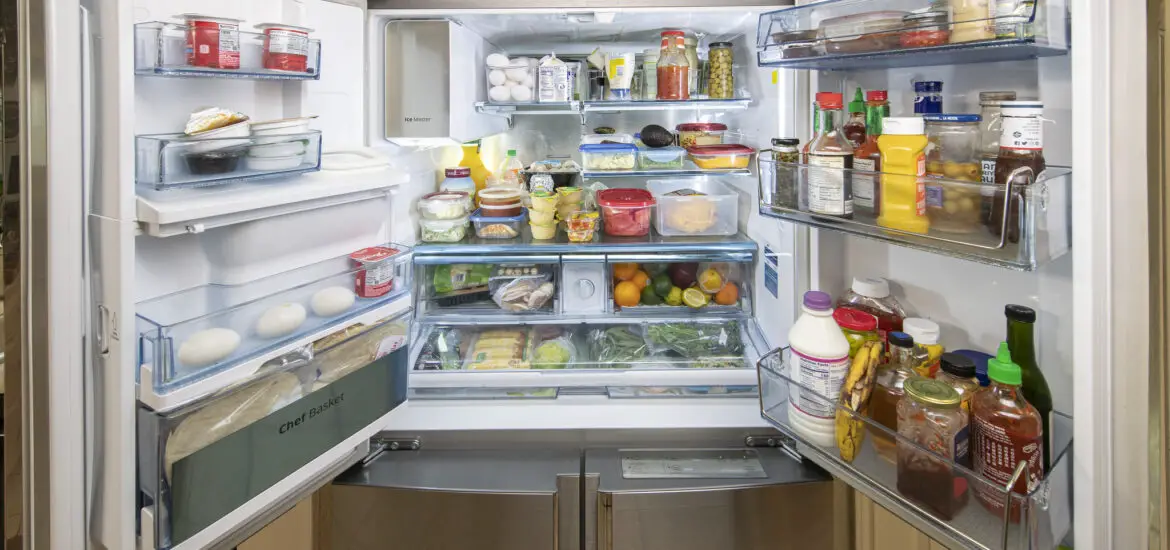If your refrigerator shakes when compressor shuts off, you might be understandably concerned. This guide will delve into the reasons behind this occurrence and provide step-by-step solutions to address it, ensuring your refrigerator runs smoothly.

Table of Contents
Common Reasons Your Refrigerator Shakes When Compressor Shuts Off
When your refrigerator shakes, especially during the time the compressor shuts off, it’s crucial to understand the potential causes to address the problem effectively. Here are the most common reasons, explained in detail:
Loose Components
Every refrigerator is made up of numerous parts, from small screws to larger mechanical components. Over time and with regular use, these parts can become loose. This is especially true for components that are frequently in motion or subjected to regular stress.
For instance, the fans inside the fridge, which circulate air, can become misaligned, leading to vibrations. Similarly, screws or bolts that hold various parts together might become loose due to the constant opening and closing of the refrigerator doors, leading to an imbalance in the system.
Uneven Flooring
The surface on which your refrigerator stands plays a pivotal role in its stability. An uneven floor means that the weight of the refrigerator isn’t evenly distributed across its four legs or corners. As the compressor operates, this imbalance can be magnified.
When the compressor stops, and there’s a sudden change in momentum, an unevenly placed fridge can wobble or shake. This not only causes the shaking but can also wear out the fridge’s components faster due to the irregular stress.
Worn Out Compressor
The compressor is a vital component of your refrigerator’s cooling mechanism. As it ages, its parts can degrade, leading to less efficient operation. An old or malfunctioning compressor might not start or stop as smoothly as it should.
This jerky operation can cause the entire refrigerator to shake. Moreover, if the mounts or dampers that hold the compressor in place are worn out, they might not effectively cushion the vibrations, leading to more pronounced shaking.
Check out these other articles…
Refrigerator Compressor Cut Off Time: The Ultimate Guide
Refrigerator Compressor Only Runs for a Few Minutes: Fixed
Refrigerator Compressor Output Pressure: Comprehensive Guide
Is an Inverter Compressor Refrigerator Good? Detailed Answer
Refrigerator Compressor vs Evaporator: Detailed Comparison
Where is Refrigerator Compressor Located? Quick & Easy Guide
Steps to Fix the Shaking
If your refrigerator is shaking, especially when the compressor shuts off, it’s essential to diagnose and address the issue promptly. Here’s a detailed approach to mitigate the shaking:
Check the Level
Start by ensuring your refrigerator is level. Use a carpenter’s level to check the top surface of the fridge. If it’s not even, you’ll need to adjust the feet.
Most refrigerators come with adjustable feet or rollers. You can turn these clockwise or counterclockwise to raise or lower individual corners, ensuring a level placement. This simple adjustment can often solve the shaking issue, especially if the root cause is an uneven floor.
You can get this STANLEY 42-468 24 In. High Impact Abs Level from Walmart to check your refrigerator’s level.
Inspect the Compressor
Before inspecting the compressor, ensure the refrigerator is turned off and unplugged for safety. Once that’s done, access the back panel of your fridge.
Here, you’ll find the compressor – a large, typically black component. Check its mounts and dampers. These are designed to absorb vibrations. If they look worn out or damaged, consider replacing them.
Also, visually inspect the compressor for any signs of damage or corrosion. While you might not be able to assess its internal condition, visible wear could be an indicator that it’s time for a professional check or a replacement.
Tighten Loose Parts
With the back panel open, it’s a good time to give your fridge a general inspection. Look for any screws, bolts, or components that might appear loose.
Using a suitable screwdriver or wrench, tighten these parts. Be careful not to overtighten, as this could damage the components. Also, give a gentle push-pull to components like fans to ensure they are securely in place and not misaligned.
Consult a Professional
If you’ve tried all the steps above and the shaking persists or if you’re unsure about any part of the process, it’s always best to call in a professional. A technician specializing in refrigerators will have the tools and knowledge to diagnose and fix the issue. They can ensure that the problem is resolved without causing further damage or complications.